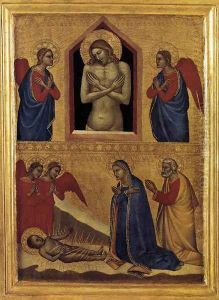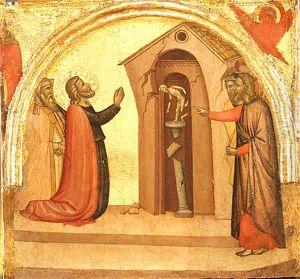Francescuccio Ghissi Paintings
Francescuccio Ghissi was an Italian painter who was active during the 14th century, specifically in the period known as the Trecento, which is part of the larger European movement of Gothic art. Little is known about his early life and training, but he is thought to have been born around 1345, likely in the Marche region of Italy. His work is indicative of the influence of the Sienese school of painting, which was characterized by elegant figures and a strong use of line, as well as by the influence of the Florentine school, with its emphasis on volume and the use of light and shadow to create depth.
Ghissi is primarily known for his religious works, which include altarpieces and other devotional paintings. One of his most notable works is the 'St. John Altarpiece,' originally created for a church in Urbino. This work, which has been separated into individual panels that are now held in various collections, is celebrated for its narrative clarity and the delicate treatment of figures and landscapes, which reveal Ghissi's skillful blending of Sienese grace with a more naturalistic approach.
The majority of Ghissi's surviving oeuvre consists of pieces that demonstrate his ability to convey complex theological ideas through his art. His paintings often feature the Virgin Mary and scenes from the life of Christ, embodying the devotional spirit of the time. Ghissi's use of gold leaf and his attention to detail in the drapery and faces of the figures he painted are typical of the Gothic style that was prevalent during his lifetime.
Despite his apparent success and the quality of his surviving works, documentation on Francescuccio Ghissi is sparse. As a result, there is limited information about his patrons or the exact scope of his oeuvre. Ghissi is believed to have died around 1379, and while he may not be as well-known as some of his contemporaries, his work provides valuable insight into the religious and artistic milieu of 14th-century Italy. Ghissi's contributions help to bridge the gap between the Byzantine influences that dominated earlier medieval Italian art and the burgeoning Renaissance style that would come to define the following century.

